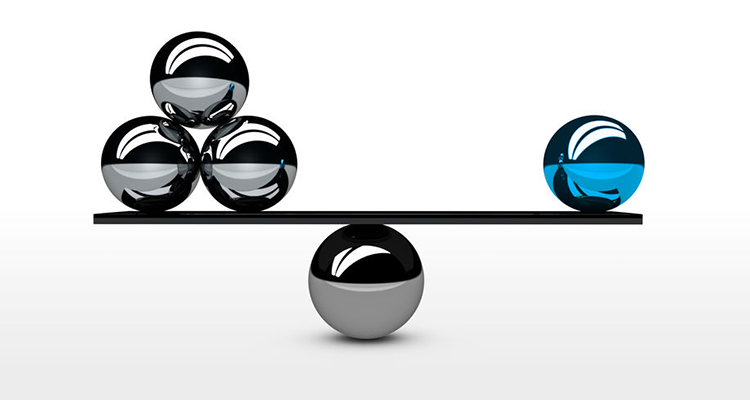Quality Versus Convenience

Great salespeople are like ducks, paddling furiously under the water while appearing calm to the outside world. Think about what our great salespeople go through with every prospective customer (budget, authority, buying team, decision-makers, influencers, need, timeline, urgency, objectives, etc.) while focusing on the client’s needs. Sometimes we overlook the most basic and critical distinction every customer makes — the choice between quality and convenience.
The quality versus convenience scale is a continuum; a customer isn’t all of one or the other, but they definitely skew one way. Some will passionately argue that they deliver the highest quality, most convenient solutions to their customers every day, and that’s why they win. To those, I say bull. We can’t be everything to everyone. Forgetting that simplest mantra of life is the root of most of our problems. It’s not a coincidence that sales reps who argue this are often on the left side of the bell curve. In every aspect of life, we face this simple trade-off. Think about it: How often is the baseball home run champion also the batting average leader or stolen base champion?
Tack this onto the long list of things that make the best salespeople so great; they have an uncanny ability to know which way the customer skews, even if they don’t know that they know. Occasionally everyone stumbles across a rare pink unicorn (the customer who has the budget and understanding of cost to get both). If the world were full of rare pink unicorns, we’d all be much wealthier than we are. In reality, the world is full of customers who want to get the best value possible. Knowing where they reside on the quality versus convenience continuum lets us better service that customer, provide them better value, reduce our cost of proposal and accelerate their buying journey.
While I’ve been talking about the distinction between quality and convenience through our sales team’s eyes, there’s an equally important distinction once the purchase order has been written and the baton is passed to operations. Operationally, what are we delivering? Quality or convenience? Are we giving the customer with a $10,000 small meeting room animated 3D renderings and a 50-page computer-aided design package? Our path to consistent profitability and sustainable happy customers ensures we deliver slightly more than the customer expects — emphasis on slightly. Delivering a Ferrari to a customer who purchased a Volkswagen will absolutely create a tribe of vociferously passionate customers. Great! However, that tribe won’t be very big or long-lived because we won’t be in business very long.
Here’s another ponderable: Does quality versus convenience apply to integration firms? Can an integrator successfully service convenience and quality customers simultaneously with the same process and revenue model? Because of the average size of the typical AV integrator, most have to try and deliver quality and convenience simultaneously. Within the course of one day, you could be bidding on three small K-12 classrooms and vying for the audio system at a 20,000-seat NHL arena. Why do we think we can successfully do both? Sorry, here’s a better question: Why do we think we can do both with the exact same process and business model?
In most other businesses, companies naturally gravitate to one of these key value drivers. Take clothing, for example. Target and Brioni both make clothes. But depending on what you’re looking for, you know exactly where you’re going to go. You may very well shop at both, but your decision on where to shop is partially driven by what you’re looking for, quality or convenience. You wouldn’t go to Target and expect to get a hand-stitched, fully canvassed custom suit, would you?
Whether you deliver quality or convenience to your customer doesn’t really matter. Some customers want both, integrators who do both and successful business models for both. The question is, which are you better geared to deliver? It’s when Target thinks they can sell $1 socks and a $3,500 sport jacket at the same time that the problems start. Successfully servicing different customer segments that have different value propositions requires different processes.


